Bali attracts visitors from all over the world because of its sun-kissed beaches, fantastic mountains, volcanic lakes, picture-postcard rice fields, amazing art, fantastic festivals, colorful international conferences and events, incredible dive spots and of course, iconic world-class surf breaks.
Keeping the balance
But Bali is also an island steeped in tradition and spiritual belief where temples and shrines hold positions of power. They are everywhere from houses, offices, shops and rice fields to rivers, waterways, beaches, cliffs and active volcanoes.
And from this perspective it is important for the survival of the island that everything is balanced.
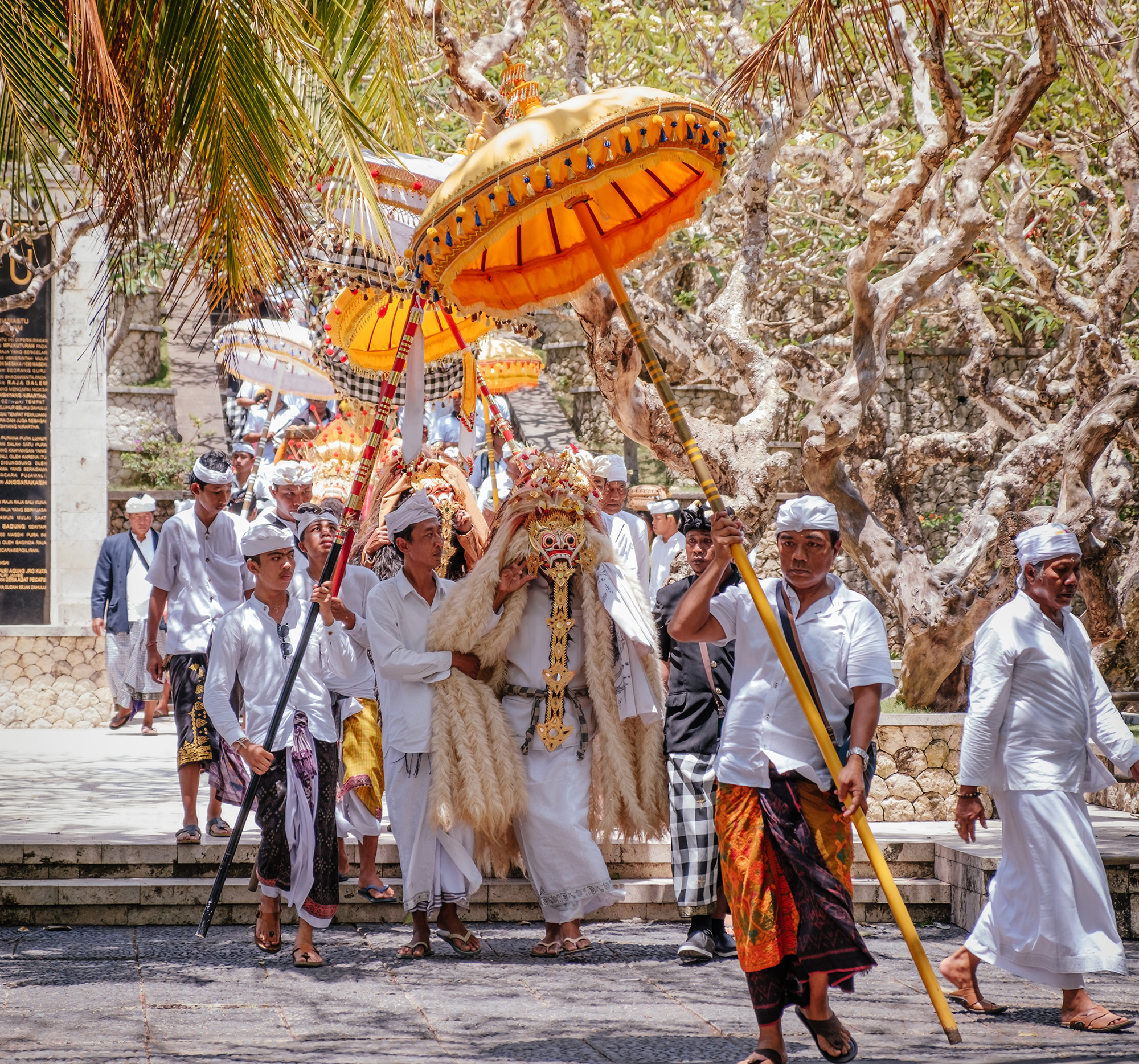 The Balinese believe this time of year is when ancestral spirits return home. Image by Johan Mouchet on Unsplash.
The Balinese believe this time of year is when ancestral spirits return home. Image by Johan Mouchet on Unsplash.
Everything has a time and a place in Bali, but determining when and where can be a complicated affair. In Bali there are two calendars; one is called the Saka calendar, which is based on lunar cycles and is similar to a western Gregorian calendar, while the other is the Pawukon calendar, which is nothing like the Gregorian model and it's almost impossibly complicated.
Saka versus Pawukon
The Saka calendar divides the year into 12-months with each month beginning after a new moon and after every 30-months an extra month is added to make sure everything is in sync with the solar year.
The Pawukon calendar, on the other hand, is very different. It runs on a cycle of 6-months covering 210-days, a number, they say, which has its roots in the rice growing traditions of the island stretching back thousands of years and it is used to set auspicious dates for religious and ceremonial events. And within that are 10-different week-cycles, all running at the same time. And if that's confusing imagine a week can be anything from just one to as many as ten days!
Most of the Pawukon’s 210-days are dedicated to ceremonies that in turn are focused on maintaining balance between the forces of good and evil. The Galungan and Kuningan festivities are some of the most important ceremonies based around this cycle and Bali seems to go back in time.
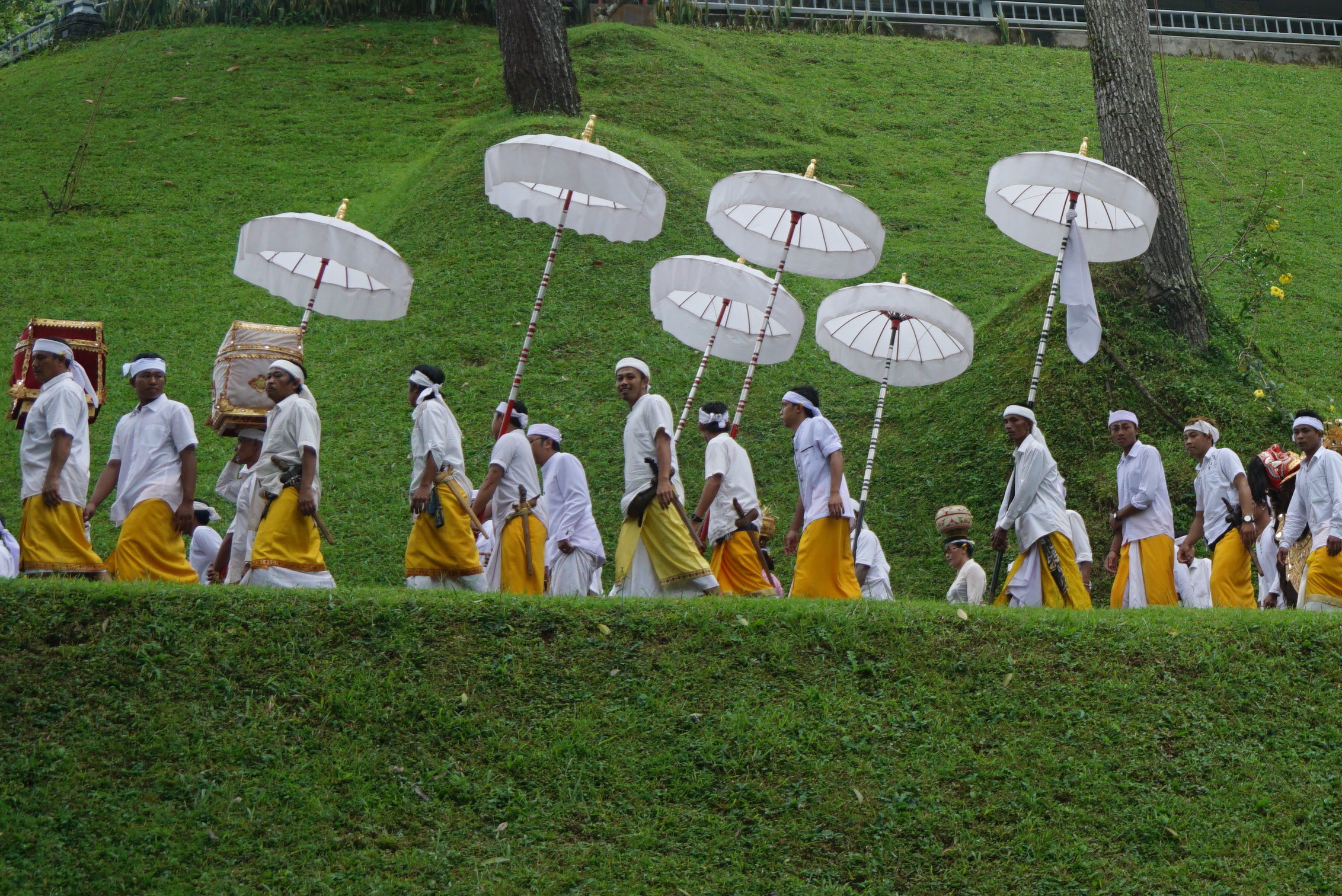 This year's Galungan festivities fall on Wednesday July 24 with Kuningan 10-days later on Saturday August 3. Image by Alit Suarnegara on Pixabay.
This year's Galungan festivities fall on Wednesday July 24 with Kuningan 10-days later on Saturday August 3. Image by Alit Suarnegara on Pixabay.
The victory of good over evil
The Balinese believe this time of year is when ancestral spirits return to the homes they once lived in and, as in India's Hindu Diwali celebrations, this signifies the victory of good over evil, and it is important these spirits are welcomed through prayers and offerings. Some scholars believe the underlying message here however, is spiritually deeper as it is to become aware of the conflict between the higher self and ego because the true balance is within.
For casual observers and visitors to the island this year's Galungan festivities fall on Wednesday July 24 with Kuningan 10-days later on Saturday August 3. But preparations actually begin 25-days before making this a 35-day long festival.
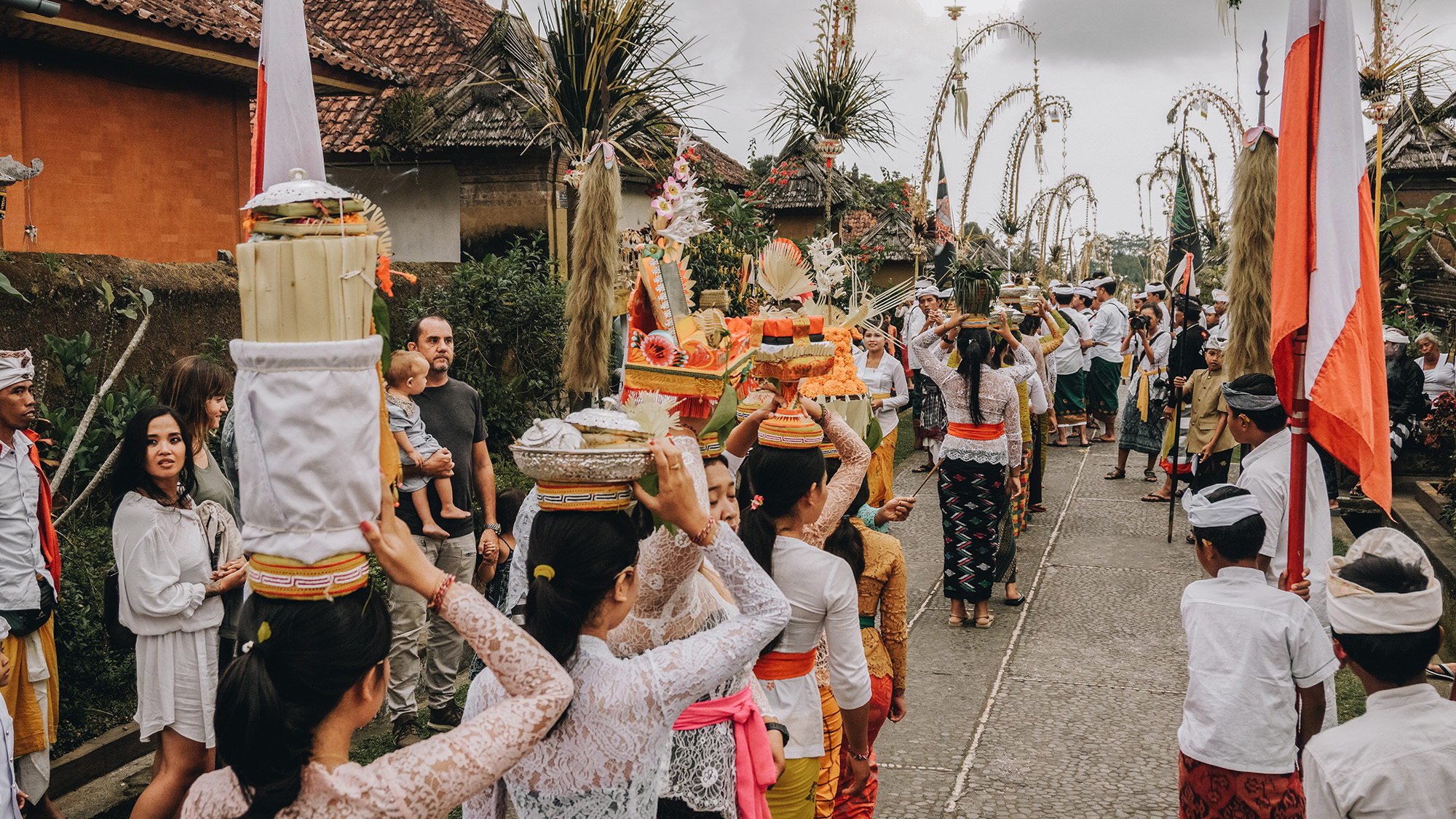 Streets are lined with tall, curved bamboo poles called Penjor. Image by Ruben Hutabarat on Unsplash.
Streets are lined with tall, curved bamboo poles called Penjor. Image by Ruben Hutabarat on Unsplash.
Balinese culture
It is also an excellent opportunity to experience Bali's culture at its best. Temples across the island are full of people and decorated in bright coloured sarongs and umbrellas. Streets are lined with tall, curved bamboo poles called Penjor. These are decorated with coconut leaves and have small offerings at the base. The Balinese believe the Penjor symbolize Mount Agung, the tallest and holiest mountan on the island. Long processions of women carry tall offerings of fruit on their heads, accompanied by men playing hypnotic gamelan and together they bring traffic, and the the trappings of the 21st century, to a standstill.
For many this is the stuff holiday snapshots and wonderful memories are made of and it's a great time to visit the island. For others, understanding the often-complex culture that makes Bali such a fascinating and popular destination is an important aspect of living and working here.
Sources: Bali Spirit, Now Bali, Wonderful Bali, Indonesia Welcomes You, Bali Tribun, Medium
Similar to this:
Preserving Bali's culture?
Plans afoot to charge tourists for waste management
Tourism 2020: Quality over Quantity

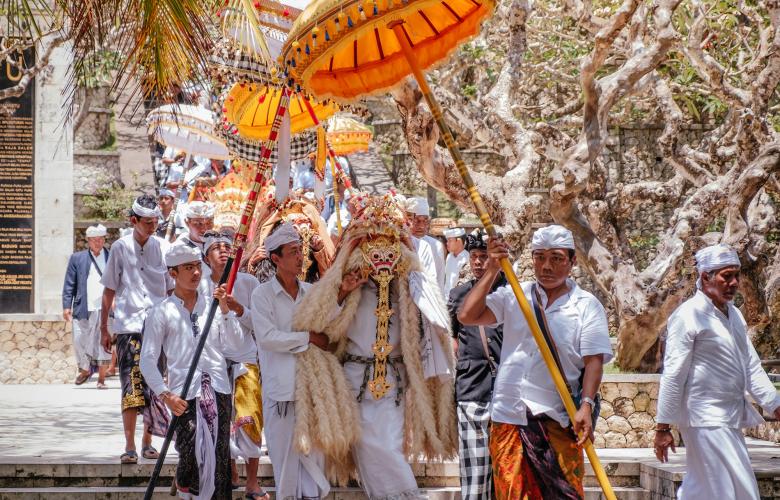
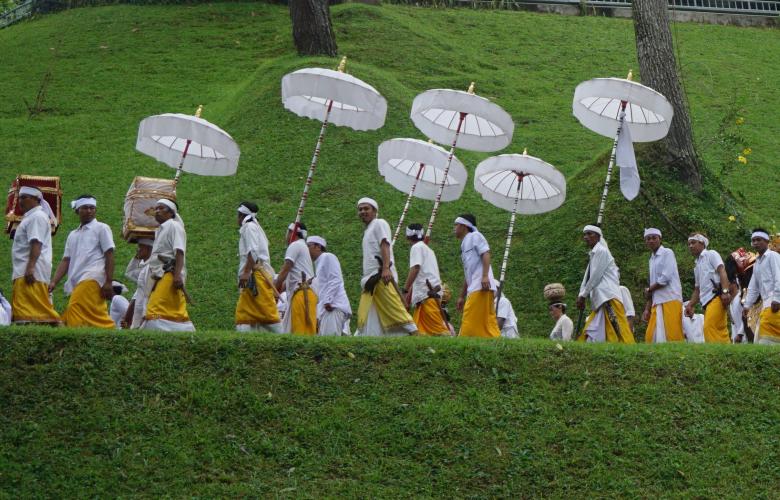
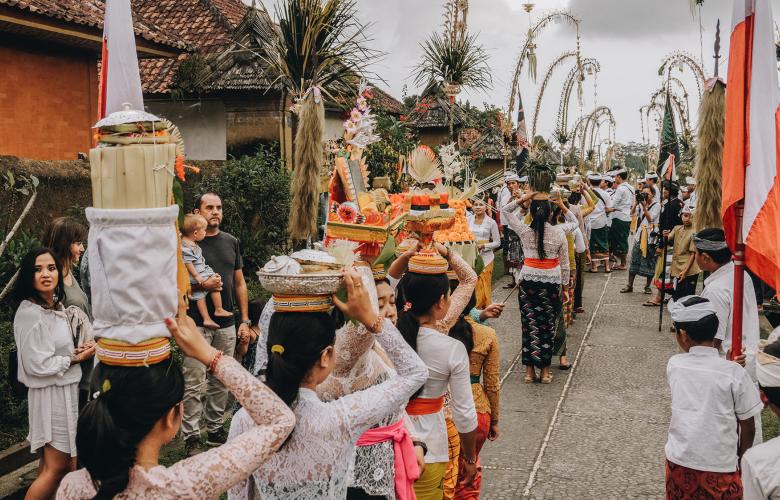
 The Balinese believe this time of year is when ancestral spirits return home. Image by Johan Mouchet on Unsplash.
The Balinese believe this time of year is when ancestral spirits return home. Image by Johan Mouchet on Unsplash. This year's Galungan festivities fall on Wednesday July 24 with Kuningan 10-days later on Saturday August 3. Image by Alit Suarnegara on Pixabay.
This year's Galungan festivities fall on Wednesday July 24 with Kuningan 10-days later on Saturday August 3. Image by Alit Suarnegara on Pixabay. Streets are lined with tall, curved bamboo poles called Penjor. Image by Ruben Hutabarat on Unsplash.
Streets are lined with tall, curved bamboo poles called Penjor. Image by Ruben Hutabarat on Unsplash.


